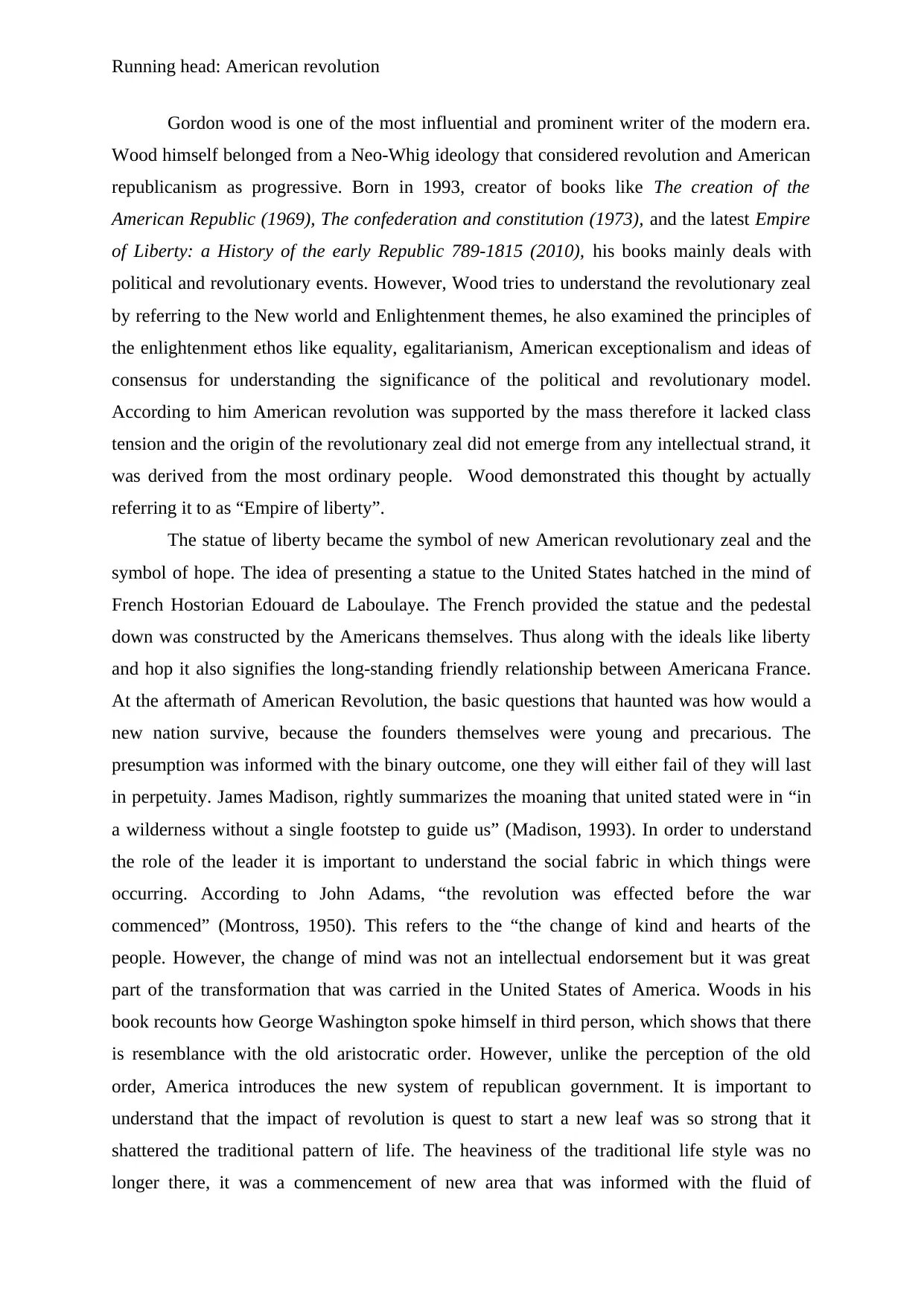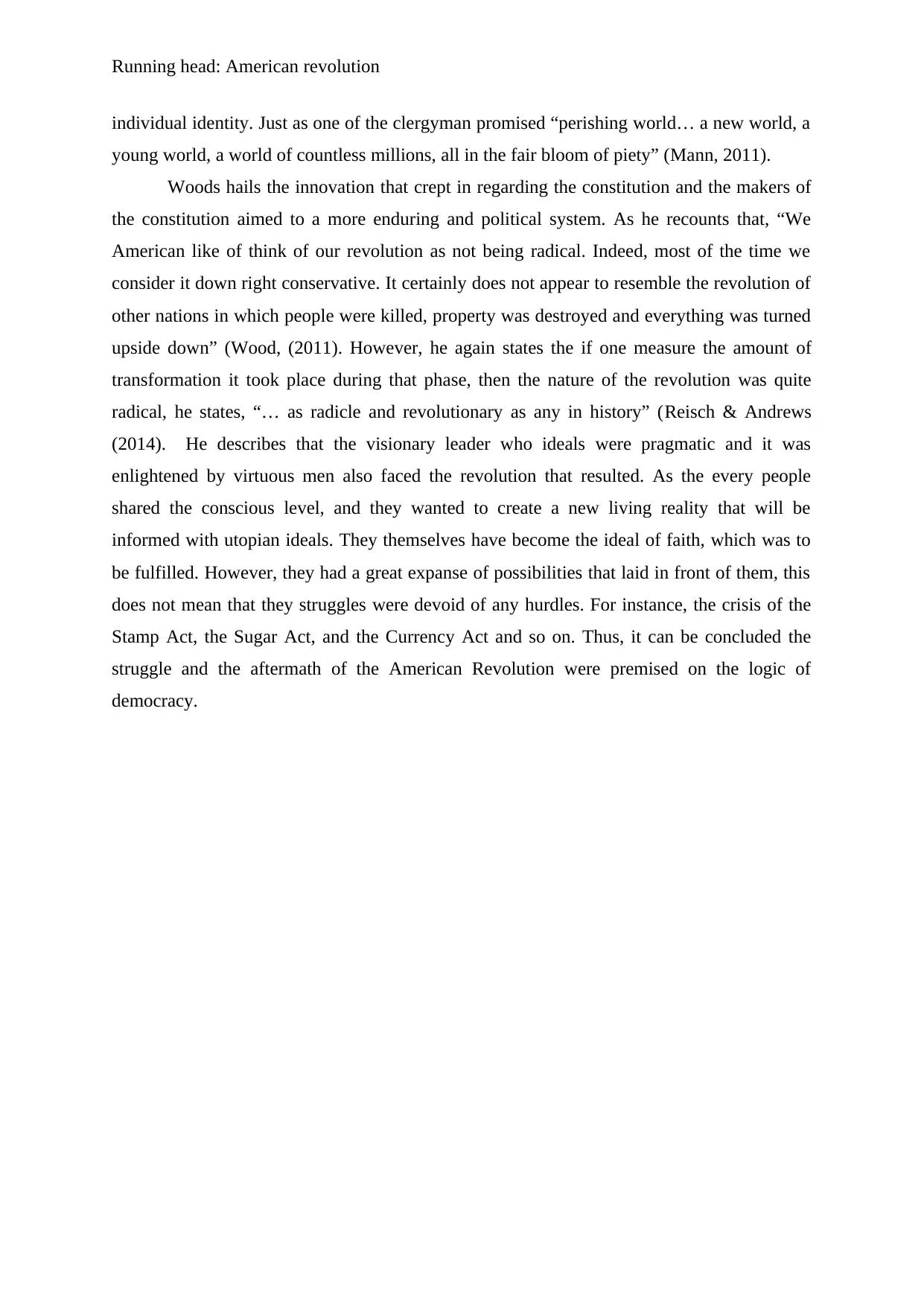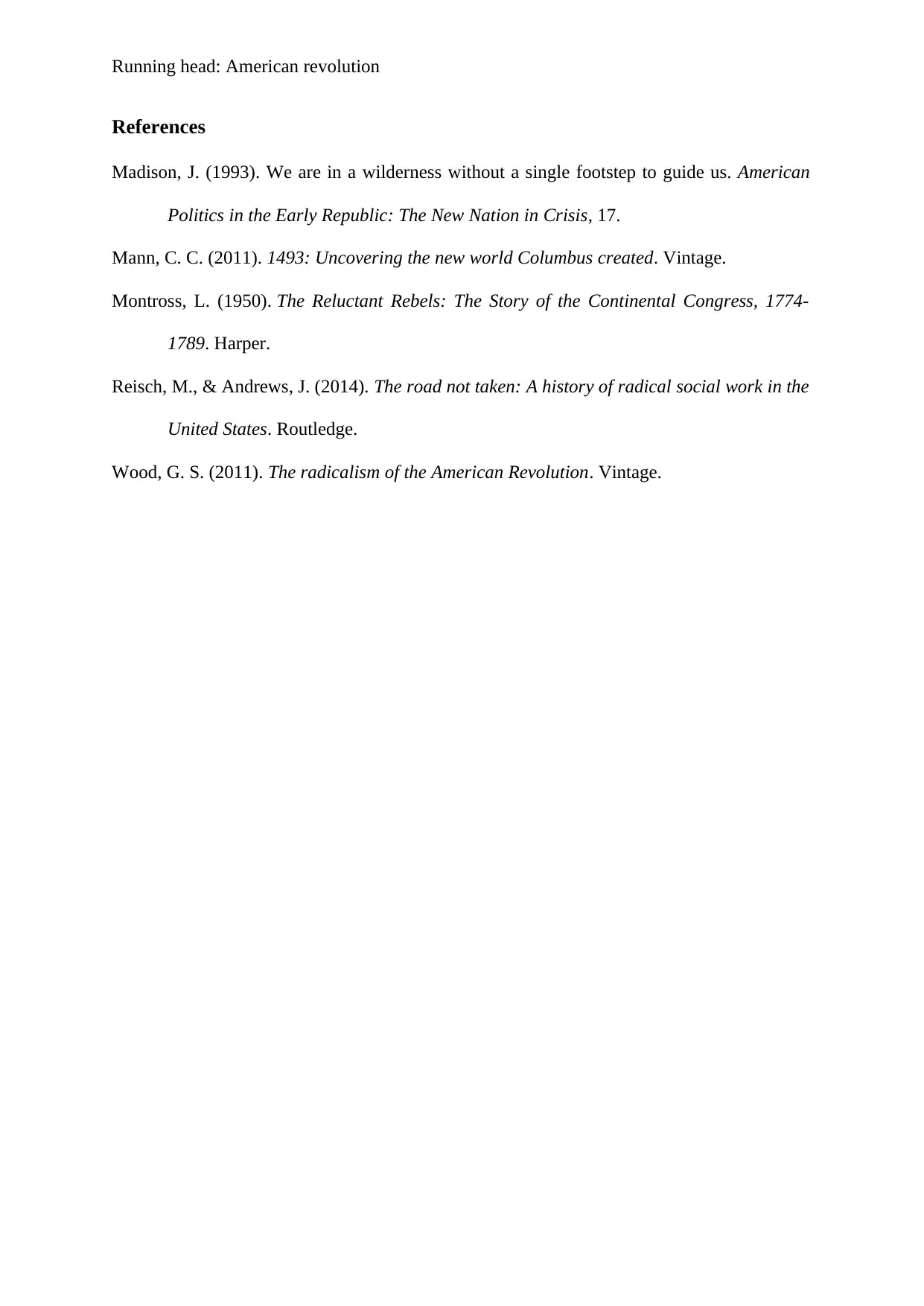American Revolution: Analyzing Gordon Wood's Perspective
VerifiedAdded on 2023/01/23
|4
|1016
|53
Essay
AI Summary
This essay delves into the American Revolution, examining its historical context, key figures, and lasting impact. It analyzes the perspectives of historian Gordon Wood, focusing on his Neo-Whig ideology and his interpretation of the revolution as a progressive movement driven by the masses. The essay explores Wood's concepts of American republicanism, revolutionary zeal, and the 'Empire of Liberty,' highlighting the significance of enlightenment ideals such as equality and egalitarianism. It discusses the challenges faced by the young nation after the revolution, referencing the views of prominent figures like James Madison and John Adams. The essay also explores the radical nature of the revolution and its impact on societal norms and individual identity, as well as the key events that shaped the revolution, such as the Stamp Act and the Sugar Act. In conclusion, the essay underscores the revolution's foundation in democratic principles and its profound influence on the United States.
1 out of 4





![[object Object]](/_next/static/media/star-bottom.7253800d.svg)